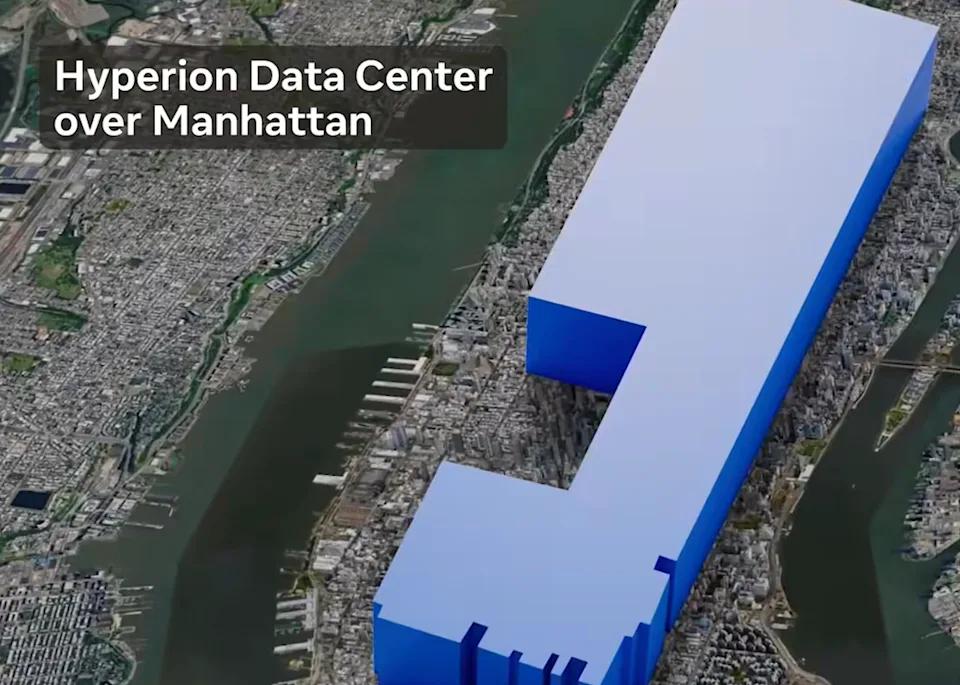When we talk about today’s technological breakthroughs, Artificial Intelligence (AI) is at the heart of change across various industries—from healthcare and energy to large-scale online services. One of the companies at the forefront of pushing AI forward is Meta (formerly Facebook).
Recently, Meta announced plans to invest hundreds of billions of dollars to build massive data centers across the United States to support advanced AI processing. The ultimate goal: to usher in the era of Superintelligence—AI that rivals human capabilities across multiple domains.
Superintelligence: Meta’s Bold New Frontier

According to a report by Bloomberg, Meta is building several large-scale data centers to support increasingly complex AI workloads. Meta plans to launch the first center, Prometheus, in Ohio by 2026. Another center, Hyperion, may grow to nearly the size of Manhattan and could scale up to 5 gigawatts in the coming years.
To realize this vision, Meta has established a dedicated team called Superintelligence Labs, recruiting top experts from OpenAI, DeepMind, and Scale AI—led by Scale AI’s co-founder, Alexandr Wang.
AI’s Hidden Cost: Water Consumption That Communities Can’t Afford
Behind Meta’s technological ambitions lies a rarely discussed but critical issue: the environmental and community impact—especially related to water usage.
While these data centers are known for their extreme energy demands, it turns out they also require staggering amounts of water. According to The New York Times, some of Meta’s data centers are already affecting local water supplies.
For instance, a facility east of Atlanta, Georgia, has reportedly caused local wells to dry up, and water bills in the area have increased significantly. Officials warn that if the trend continues, water rationing could become necessary within the next few years.
To put things into perspective:
- A typical data center consumes around 500,000 gallons of water per day (about 1.9 million liters).
- Meta’s next-generation AI-focused facilities are projected to use up to 6 million gallons per day (around 22.7 million liters).
- That’s more than the total daily water usage of some entire counties in the U.S.
The Question We Should All Be Asking
“What data centers don’t seem to understand is they’re drawing away the wealth of the community… We don’t have enough water.”
— Mike Hopkins, Executive Director of Newton County Water & Sewerage Authorit
Hopkins' words highlight an urgent issue in our digital era: while technology might propel us forward, without responsibility to the environment and local communities, we may be heading toward an unsustainable future.
It’s time to ask critical questions about how much resource we’re willing to sacrifice for innovation. Even if data and AI are crucial for the economy, transparency and thoughtful resource planning are essential to avoid long-term damage.
A Cautionary Tale in the Making
While AI promises to transform industries and reshape economies, the real challenge is building that future responsibly.
If the backbone of AI requires exhausting a community’s most vital resource—water—then we may be moving forward while leaving behind damage that’s hard to undo.
Meta and other major tech companies must recognize that water isn’t just a cooling cost—it's the lifeblood of the communities surrounding their data centers. Without sustainable planning, today's minor concerns could spiral into a national resource crisis.
_____________________________________________________________________________________________________________________________________________________________________
Source: Engadget – Meta’s new AI data centers could use millions of gallons of water per day